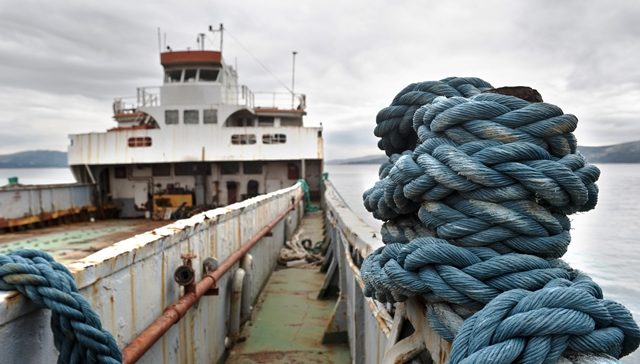The UK P&I Club has issued the first of a series on current risk topics with a focus on Mooring.
Whilst onboard, the Club’s inspectors spent a considerable amount of time looking at each vessel’s mooring arrangement, equipment and procedures to directly investigate current mooring issues. This was a large undertaking, and during the past twelve months 373 ships have been inspected. All of this data was recorded and has been analysed.
The aim of this exercise was not only to gauge the standard of mooring arrangements and procedures onboard but also to highlight areas where improvements could be made, as well as areas that were doing well. This twelve month exercise by the Club’s in-house inspectors has produced the following important supplementary findings:
Equipment used during mooring was generally found to be in good condition.
BUT
- A significant number of vessels did not have adequate procedures or arrangements in place.
- Crew used during mooring were often not adequately trained or correctly supervised.
- Mooring ropes are frequently stored on drum ends.
- Layers of paint are often applied to drum ends instead of them being painted with a synthetic coating or resin.
- A large number of vessels do not have non-slip mooring decks
One of the major findings of the exercise was that most of the equipment used in mooring operations was found to be in good condition. Some of the inspectors noted that, despite the overall good condition of the mooring winches, it was sometimes difficult to grease the equipment correctly. It is important that all greasing points are free, working correctly and have not been painted over. To ensure that each point of the equipment is greased it may be beneficial to highlight or number each point and record the information in a plan.
Of all the vessels inspected 51% carried out brake tests annually (26% did not, and for 23% it was not applicable). It was felt that although this is mainly a tanker requirement, it should be done on more ships, where possible, to improve the overall safety of the ship during high-risk mooring operations. Inspectors noted that a large number of vessels kept moorings on the drum ends instead of making them fast. It is not good practice to store mooring ropes on drum ends and this should be avoided. Ropes made fast on drum ends are more likely to jump and cause expensive damage to the drum end bearings or cause delays/problems should more ropes need to be deployed.
UK P&I Club’s focus report on moorings concludes that whilst many areas of the mooring operation are to commended, many are still inadequate in one way or another
The key points raised are predominantly related to procedures and practices, the use of insufficiently trained crew is still a significant issue. The basic mooring arrangement and ISM mooring procedure were not acceptable on a significant number of inspected vessels. It is vital that time is taken to ensure that procedures are not only acceptable but that they are followed by the crew.
A number of familiar factors reoccur in mooring incidents, they are listed below.
- Seafarers stand in bights or snap-back zones, when ropes part those involved are often injured.
- Crew with insufficient training are used during mooring operations, it is often these people who are seriously injured if something goes wrong.
- The person supervising mooring is also involved with operation and is unable to carry out his role effectively
The Club has produced a detailed report and accompanying poster that help to highlight the findings of the Risk Focus project.
Report
Poster
Source: The UK P&I Club































































Good points , lack of training, lack of supervision.
Also mooring is regarded as a low skill job,
Better culture